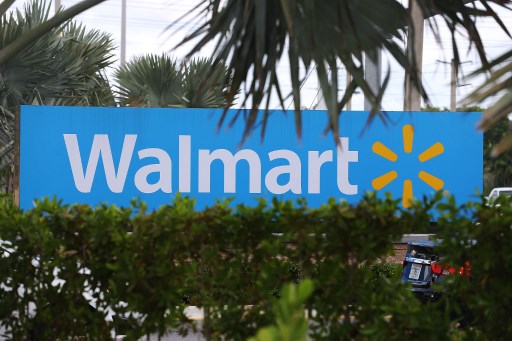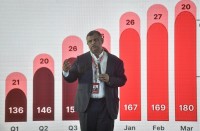
by John Biers
Agence France-Presse
Walmart updated investors Thursday on its latest new gadgets and time-saving pickup options to lure shoppers to stores and away from arch-rival Amazon.
The good news? The company’s array of investments in e-commerce, store beautification, low prices and higher employee pay are indeed driving up store traffic.
The bad news? Profits are down.
Walmart US, the biggest division at Wal-Mart Stores, scored a 1.8 percent rise in comparable sales in the second quarter compared with the year-ago period, its 12th straight quarter with positive sales in the closely-watched benchmark.
Revenues rose 2.1 percent to $123.4 billion.
But net income fell 23.2 percent to $2.9 billion. Factors included more aggressive spending on e-commerce and low price investments, as well as costs of $788 million connected to a one-time debt payment.
Executives expressed confidence in Wal-Mart’s strategy and highlighted an especially strong performance in the US grocery business, which experienced the biggest jump in five years, in part due to price inflation in meat and produce.
Wal-Mart holds the biggest share of the US grocery market of any retailer, with its network of nearly 4,700 stores that the company says are located within 10 miles of about 90 percent of the US population
But Wal-Mart is girding for a more direct head-to-head battle with Amazon with the tech giant’s impending purchase of Whole Foods Market.
“Amazon are a really strong competitor,” said Wal-Mart US chief executive Greg Foran in a conference call with reporters. “We’ve got a good strategy. I’m comfortable with what we’re doing.”
“Obviously we’re keeping an eye on what a strong competitor is doing,” he added.
New tech-oriented initiatives include the expansion of a program that lets consumers pick up online orders to more than 900 locations, up from 670 in the prior quarter.
Consumers are also able to reorder their most frequent purchases with a few quick clicks and can utilize automated “pickup towers” to receive goods after scanning in a barcode.
Shares of Wal-Mart fell on the report, ending down 1.6 percent at $79.70.
Although the earnings bested analyst expectations, investors were “a bit disappointed” with some of Wal-Mart’s third-quarter profit forecast, said a note from Briefing.com.
But the decline also reflected a pullback after Wal-Mart gained 11 percent over the last month, Briefing.com added.
“We note the decline in net income, but believe that some short term erosion is necessary as the business invests in its future,” said Neil Saunders, managing director at GlobalData Retail.
“In our view, Walmart is a demonstration that traditional businesses can survive and thrive in this era of retail if they are prepared to adapt and evolve.







